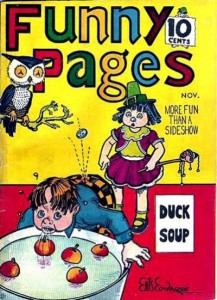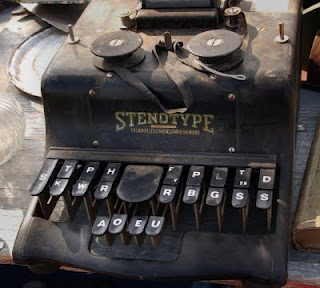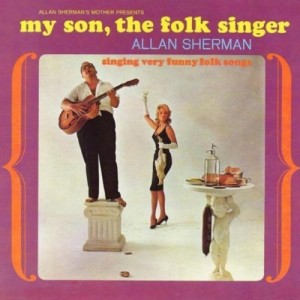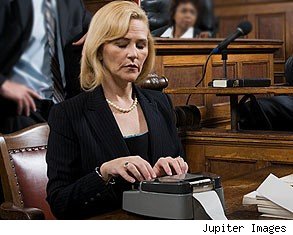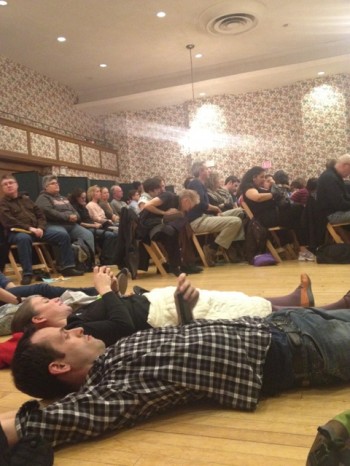 This is part 4 of an on-going series about my experience training to be a court reporter.
This is part 4 of an on-going series about my experience training to be a court reporter.
The afternoon of the orientation for new students, maybe sixty of us were herded into a third floor classroom at the New York Career Institute. I looked around at the people sitting in folding chairs. Most looked only a few years older than my 19-year-old son.
There were white girls, black girls, hispanic girls, Orthodox Jewish girls, and even a few Orthodox men wearing yamulkes (I later learned that court reporting is quite popular among the Orthodox). The average age was probably 25 but there were a few scattered middle-agers, as well.
I was heartened when I noticed one women with short, grey hair and made a note to speak to her after the orientation. I struck up a conversation with the young African-American woman sitting next to me. She told me she studied steno in high school. “It was very difficult,” she said.
People sat in groups of two or three, friends from home, from high school. I eyed a table of cookies, donuts and soda but didn’t dare get up. No one did. Everyone seemed nervous, eager for the meeting to begin. I studied the stenotype machine at the front of the classroom. With its black keys, it looked more like a piano than a computer or typewriter keyboard .
When Mr. G, a short Hispanic man, who runs the court reporting program, came into the classroom, the crowd quieted down.
“Are there any paralegal or medical students in the room?” he called out.
Ten or fifteen people raised their hands. He told them to go to another classroom for a separate orientation meeting.
“Now that they’re out of here. Is everyone here registered for court reporting?” he said. There was a chorus of yeses.
“Court reporting is a great career. I did it for 18 years,” he told the group. “You can make a lot of money as a court reporter whether you decide to freelance or work in a court. But it takes a lot of work. Be prepared to practice two hours every day. Every day. Alright, I’ll give you Sunday off. But you must practice for two hours, six days a week.”
I was starting to stress out. Two hours a day? That seemed like an awful lot of time to devote to that little machine. I was still in denial about how much time and practice it would take to reach the required speed of 220 words per minute. How hard could it be?
I’m not sure if this happened or if I imagined it but I think Mr. G lifted up the stenography machine and hugged it to his chest. I am certain, however, that he said the following.
“I love this machine. I loved this machine from the minute I saw it. This machine gave me a life, a profession.’
My first thought: I will never love that machine. I was sure of it.
After the meeting I went up to Mr. G with a question:
“I’m a really fast typist, will that help me in court reporting?”
“Not really,” Mr. G told me. “One has nothing to do with the other.”
After that discouraging interchange with Mr. G, I sought out the woman with short grey hair.
“I think we’re in the same demographic,” I said cheerily.
“I don’t know about that. I think I’m a little older than you,” she said. “I’m 63.”
“Okay, you are a little bit older. So what did you think?”
The grey haired woman, who turned out to be smart and friendly, told me that she was excited. She’d been laid off from a development job at a major non-profit and was game for something new.
“I love school,” she said. “I have two master’s degrees. I love to study.”
“But aren’t you worried about learning to type that fast?” I said. “And the textbook. All this stenography. It looks like gibberish.”
Anxiety was seeping out of me. I needed a reality check.
“Don’t worry, it’ll be fine,” the grey haired woman said. We exchanged phone numbers and decided to stay in touch.
For me, the orientation was actually disorienting. Afterwards, my doubts returned with a vengence. Leafing through Therory for Court Reporting Volume 1, the text book for the beginner class, I became unhinged. Why is ate spelled AEUT? Why is sew spelled SWE? Why is will you be HRUB? I wondered to myself.
This is silly, this is crazy. The book’s introduction wasn’t much help :
“The greatess of this keyboard lies in its simplicity. The four fingers of the left hand control all of the beginning consonants by striking two, three, and sometimes four keys at a time…”
What the hell was I getting into? My anxiety turned into full fledged panic. When I got home I was on the verge of tears.
“I’m not going back there. It was a terrible idea,” I told my husband.
He heard me out and didn’t try to change my mind. Just a few weeks before, he seemed shocked when I decided to become a court reporter in the first place. He’d gotten used to the idea, but I don’t think he was really sold on it. The next day, a Friday, I cried to a friend over coffee at Sweet Melissa’s that I had made a terrible mistake.
“Maybe I should learn digital video editing instead,” I remember telling her. I had been a film and video editor in a former career. At least it was creative.
By Sunday night, I was feeling calmer and a thought floated into my mind. Why don’t I just try it? If this thing is really so wrong for me it’ll be obvious at the first class. If I don’t go, I’ll never know.
I slept soundly that night for the first time in days…
To be continued…


